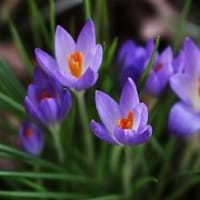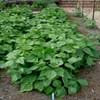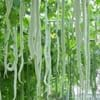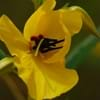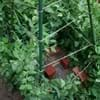Life Span
Annual
Perennial
Type
Vegetable
Bulb, Flowering Plants
Origin
Central America, South America
Aegean Islands, Central Asia, Middle East, North Africa, Southern Europe, Western China
Types
Bush Beans, Pole Beans
Crocus abantensis, Crocus adanensis, Crocus biflorus, Crocus chrysanthus, Crocus korolkowii
Habitat
Cultivated Beds
Scrubs, Woods
USDA Hardiness Zone
Not Available
3-8
AHS Heat Zone
Not Available
8-1
Sunset Zone
A1, A2, A3, H1, H2, 1a, 1b, 2a, 2b, 3a, 3b, 4, 5, 6, 7, 8, 9, 10, 11, 12, 13, 14, 15, 16, 17, 18, 19, 20, 21, 22, 23, 24
1a, 1b, 2a, 2b, 3a, 3b, 4, 5, 6, 7, 8, 9, 10, 11, 12, 13, 14, 15, 16, 17, 18, 19, 20, 21, 22, 23, 24
Habit
Vining/Climbing
Clump-Forming
Minimum Height
Not Available
Flower Color
Lavender
Blue, Orange, Pink, Purple, White, Yellow
Flower Color Modifier
Bicolor
Not Available
Fruit Color
Purple
Not Available
Leaf Color in Spring
Green, Purple
Green
Leaf Color in Summer
Green
Not Available
Leaf Color in Fall
Green
Green
Leaf Color in Winter
Not Available
Green
Leaf Shape
Oval
Grass like
Plant Season
Spring, Summer, Fall
Spring, Winter
Sunlight
Full Sun
Full Sun, Part sun
Type of Soil
Loam, Sand
Loamy
The pH of Soil
Neutral, Alkaline
Neutral, Slightly Acidic
Soil Drainage
Well drained
Well drained
Bloom Time
Indeterminate
Spring, Winter
Tolerances
Drought
Drought
Where to Plant?
Container, Ground, Pot
Container, Ground, Pot
How to Plant?
Seedlings
From bulbs, Grafting, Seedlings
Plant Maintenance
Medium
Medium
Watering Requirements
Do Not over Water, Requires regular watering, Water evenly
Form a Soil ring to water efficiently, Water Deeply, Water twice a day in the initial period, Water when soil is dry
In Summer
Lots of watering
Lots of watering
In Spring
Moderate
Moderate
In Winter
Average Water
Average Water
Soil pH
Neutral, Alkaline
Neutral, Slightly Acidic
Soil Type
Loam, Sand
Loamy
Soil Drainage Capacity
Well drained
Well drained
Sun Exposure
Full Sun
Full Sun, Part sun
Pruning
Remove damaged leaves, Remove dead branches, Remove dead leaves
No pruning needed in the early stages, Prune to stimulate growth, Remove dead or diseased plant parts, Requires little pruning
Fertilizers
5-10-10 fertilizer
All-Purpose Liquid Fertilizer
Pests and Diseases
Alternaria Leaf Spot, Anthracnose, Aphids, Armyworm, Bacterial Blight
Aphids, Botrytis Blight, Mushroom root rot, Narcissus Basal Rot, Narcissus Bulb Fly, Slugs, Snails, Tulip Fire, Tulip Viruses
Plant Tolerance
Drought
Drought
Flower Petal Number
Single
Single
Foliage Texture
Coarse
Fine
Foliage Sheen
Matte
Glossy
Attracts
Not Available
Not Available
Allergy
Not Available
Not Available
Aesthetic Uses
Not Available
Not Available
Beauty Benefits
Beautiful Skin
Not Available
Environmental Uses
Fixes Nitrogen
Air purification
Medicinal Uses
Cancer, Diuretic, Homeopathy, Hypotensive, Miscellany
Arthritis, Gout
Part of Plant Used
Leaves, Seedpod, Seeds
Whole plant
Other Uses
Used for making brown dye, Used in biomass, Used in in reviving woollen fabrics
Not Available
Used As Indoor Plant
Yes
No
Used As Outdoor Plant
Yes
Yes
Garden Design
Container, Edible, Herb, Vegetable, Vine
Not Available
Botanical Name
PHASEOLUS vulgaris 'Purple King'
Crocus Longiflorus
Common Name
String bean, Field bean, French bean
Crocus
In Hindi
String Bean
Crocus
In French
Haricot vert
Crocus
In Spanish
String Bean
Azafrán
In Greek
Αμπελοφάσουλο
κρόκος
In Portuguese
Feijão de corda
Açafrão
In Polish
Fasolka szparagowa
Krokus
In Latin
Gloria Bean
Erocum
Phylum
Magnoliophyta
Magnoliophyta
Class
Magnoliopsida
Liliopsida
Order
Fabales
Asparagales
Family
Fabaceae
Iridaceae
Clade
Angiosperms, Eudicots, Rosids
Angiosperms, Monocots
Tribe
Phaseoleae
Not Available
Subfamily
Faboideae
Crocoideae
Number of Species
Not Available
Season and Care of String Bean and Crocus
Season and care of String Bean and Crocus is important to know. While considering everything about String Bean and Crocus Care, growing season is an essential factor. String Bean season is Spring, Summer and Fall and Crocus season is Spring, Summer and Fall. The type of soil for String Bean is Loam, Sand and for Crocus is Loamy while the PH of soil for String Bean is Neutral, Alkaline and for Crocus is Neutral, Slightly Acidic.
String Bean and Crocus Physical Information
String Bean and Crocus physical information is very important for comparison. String Bean height is 210.00 cm and width 60.00 cm whereas Crocus height is Not Available and width 5.10 cm. The color specification of String Bean and Crocus are as follows:
String Bean flower color: Lavender
String Bean leaf color: Green and Purple
Crocus flower color: Blue, Orange, Pink, Purple, White and Yellow
- Crocus leaf color: Green
Care of String Bean and Crocus
Care of String Bean and Crocus include pruning, fertilizers, watering etc. String Bean pruning is done Remove damaged leaves, Remove dead branches and Remove dead leaves and Crocus pruning is done No pruning needed in the early stages, Prune to stimulate growth, Remove dead or diseased plant parts and Requires little pruning. In summer String Bean needs Lots of watering and in winter, it needs Average Water. Whereas, in summer Crocus needs Lots of watering and in winter, it needs Average Water.

